(iii) As per the question it is given that ![]() ,
, ![]() and
and ![]()
We have the condition that three points to be collinear, the area of the triangle formed by these points will be zero. Now, we know that, vertices of a triangle are ![]() , then the area of the triangle is given by,
, then the area of the triangle is given by,
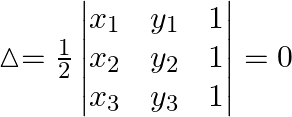
Then, put given values in above formula
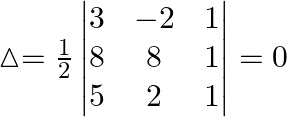
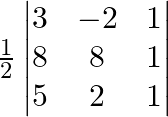
Expanding along ![]()
![Rendered by QuickLaTeX.com =\frac{1}{2}\left[ 3\left| \begin{matrix} 8 & 1 \\ 2 & 1 \\ \end{matrix} \right|-2\left| \begin{matrix} 8 & 1 \\ 5 & 1 \\ \end{matrix} \right|+1\left| \begin{matrix} 8 & 8 \\ 5 & 2 \\ \end{matrix} \right| \right]](https://www.learnatnoon.com/s/wp-content/ql-cache/quicklatex.com-6cc0fcb2d77d490d76920caab8f019cb_l3.png)
![]()
![]()
![]()
Therefore, Area of triangle is zero so, the points are collinear.
(iv) As per the information given in the question ![]() ,
, ![]() and
and ![]()
We have the condition that three points to be collinear, the area of the triangle formed by these points will be zero. Now, we know that, vertices of a triangle are ![]() , then the area of the triangle is given by,
, then the area of the triangle is given by,

Put the value in above formula
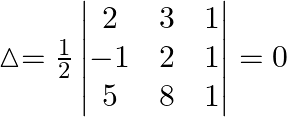
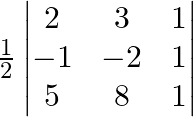
Expanding along ![]()
![Rendered by QuickLaTeX.com =\frac{1}{2}\left[ 2\left| \begin{matrix} -2 & 1 \\ 8 & 1 \\ \end{matrix} \right|-3\left| \begin{matrix} -1 & 1 \\ 5 & 1 \\ \end{matrix} \right|+1\left| \begin{matrix} -1 & -2 \\ 5 & 8 \\ \end{matrix} \right| \right]](https://www.learnatnoon.com/s/wp-content/ql-cache/quicklatex.com-7239d69794f34b270b2c0fa64ab75edf_l3.png)
![]()
![]()
![]()
![]()
![]()
![]()
